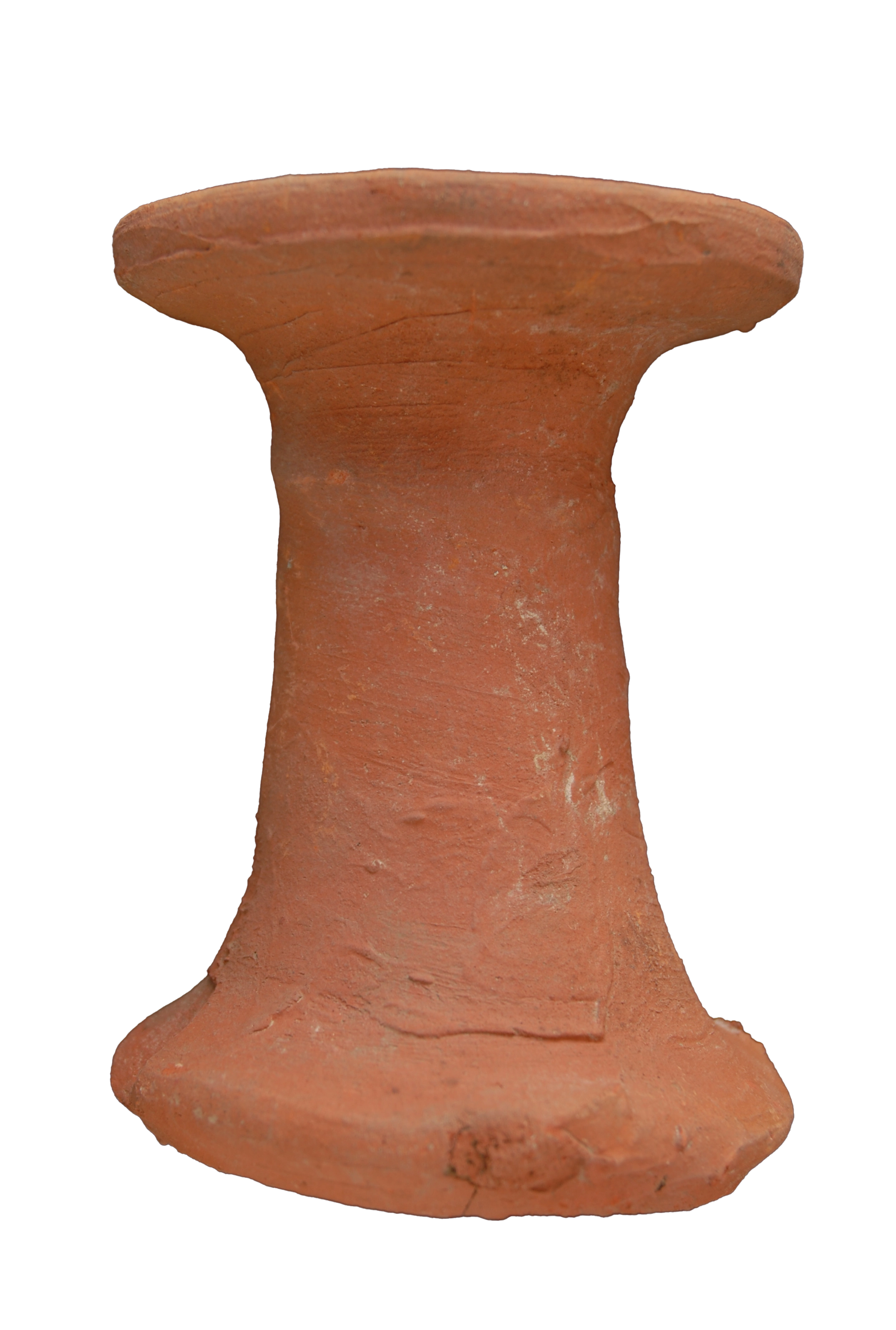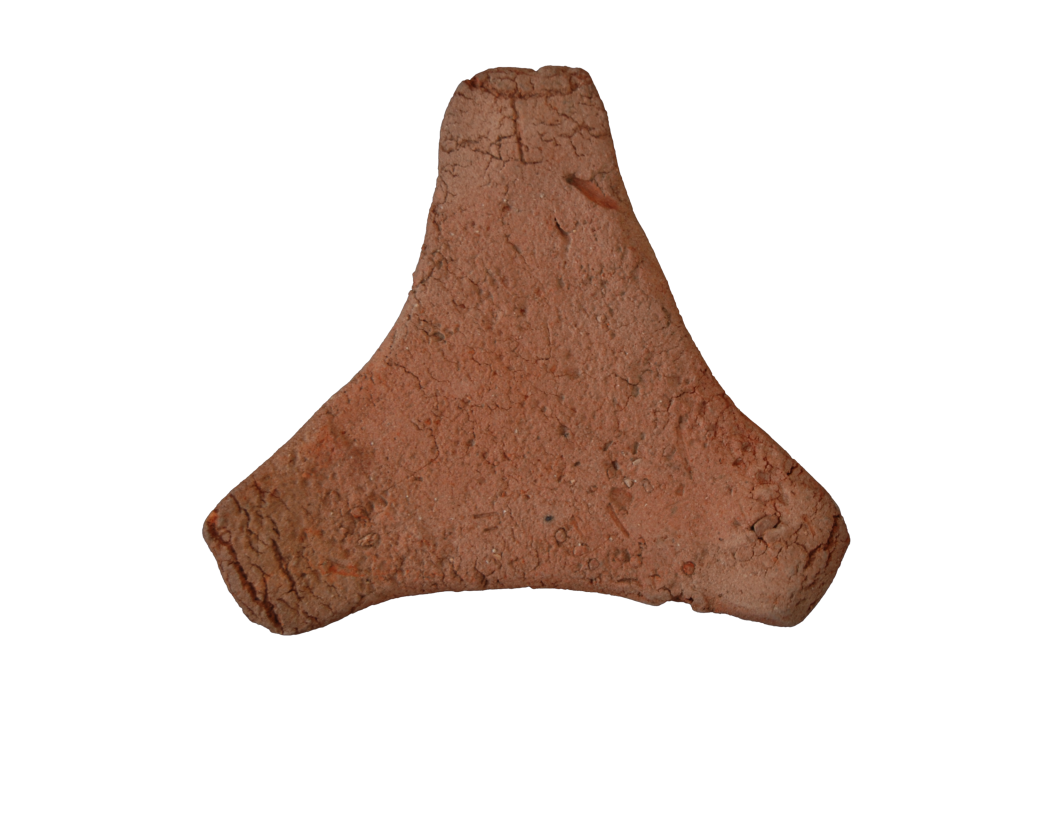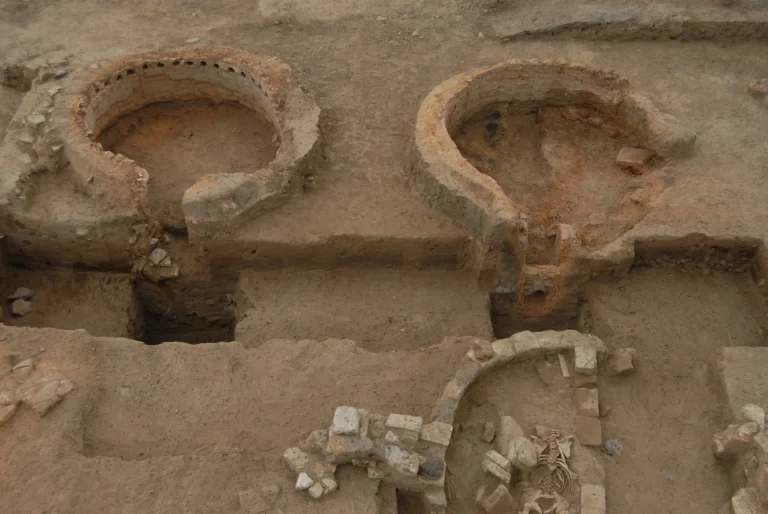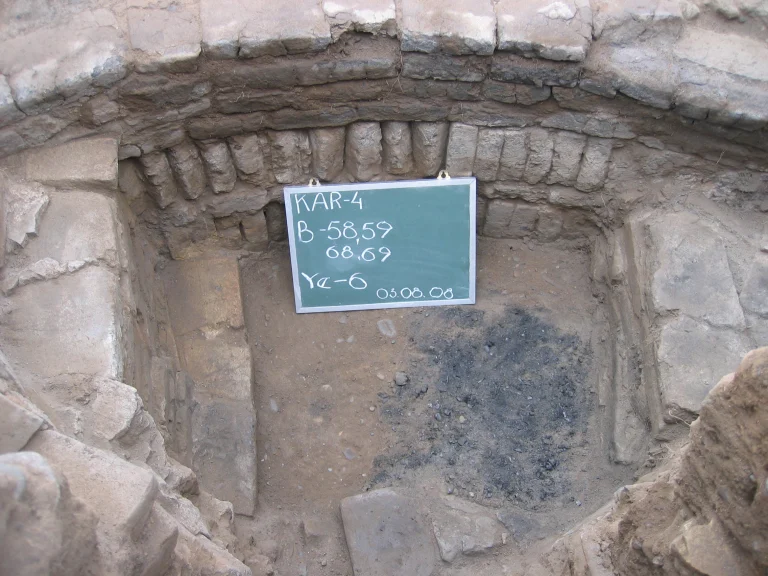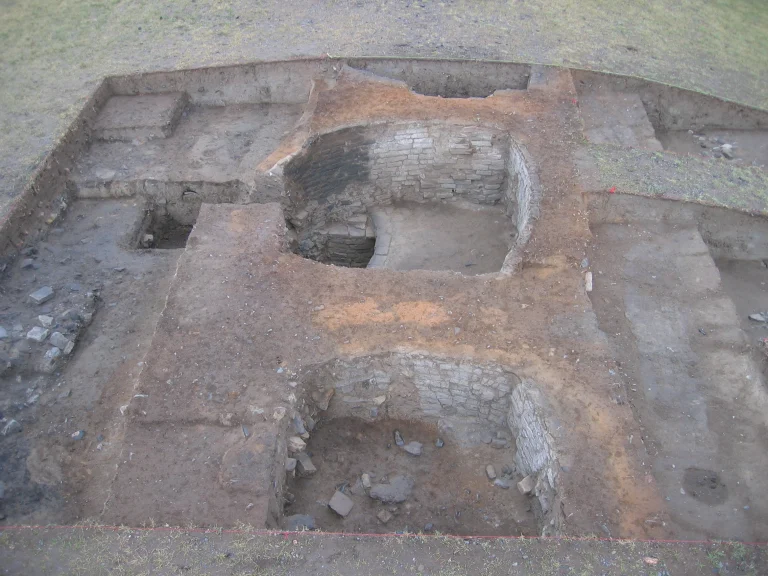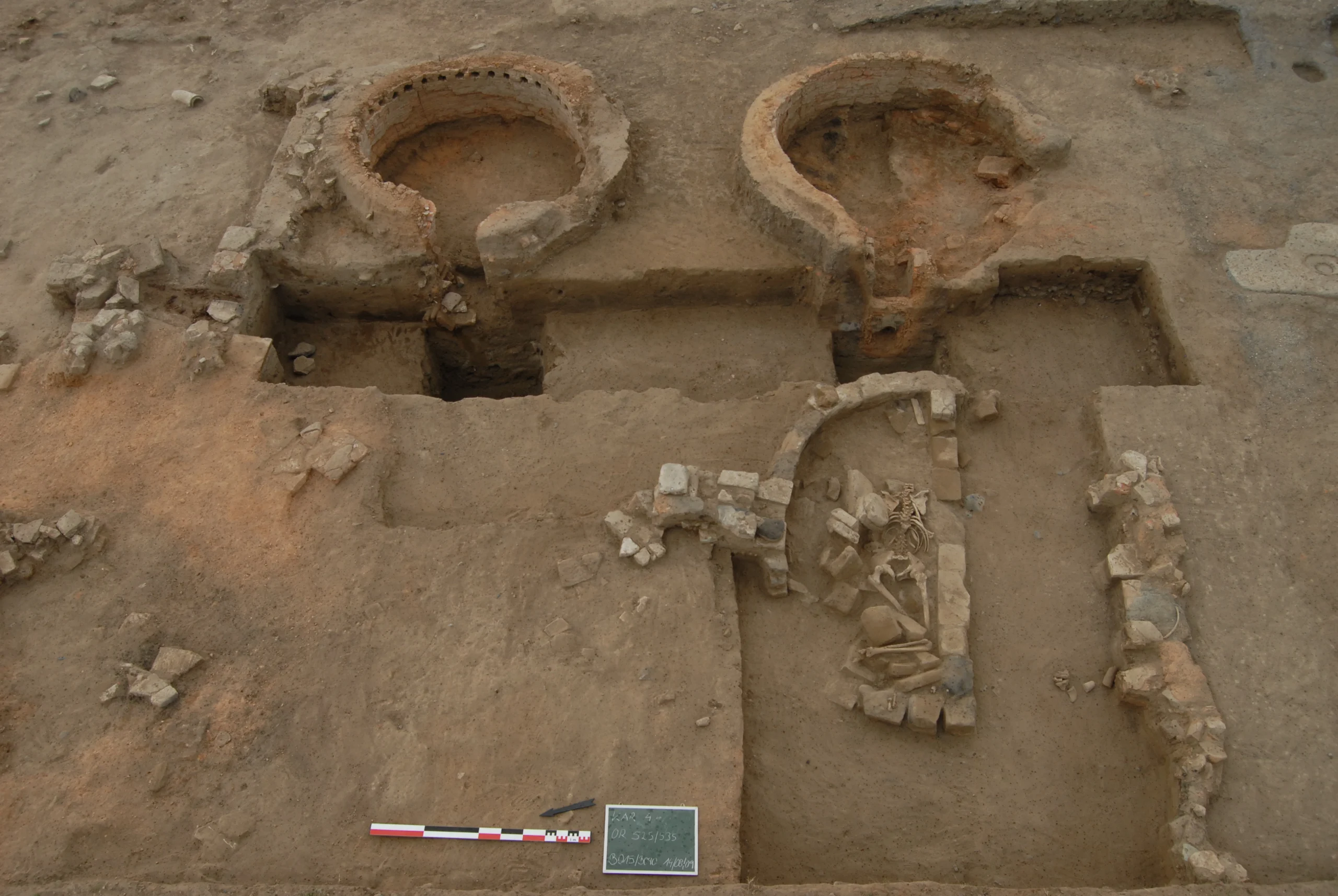
The Large Ovens
One of the most impressive discoveries during the excavations in Karakorum is the kiln district, which is located to the south and west of the large Buddhist temple complex in the southwest of the city. These kilns, which are extremely well preserved, are the first of their kind to be excavated in Mongolia and provide valuable insights into the technological history of this period.
The Construction of the Kilns
The furnaces were discovered in 1999 through geomagnetic investigations by the Institute for Radiation and Nuclear Physics at the University of Bonn. The measurements showed six strong signals just a few meters south and west of the “Great Hall”, which indicated heavily burnt structures. During the excavations in the summer of 2000, their function and structure could be examined more closely. The ovens consist of a slightly oval combustion chamber with a clayey-sandy base that has hardened due to the heat. In front of the opening of the combustion chamber is a brick hole up to 1.20 m deep, which served as a fire chamber. Firing took place via a stokehole, which also regulated the oxygen supply. On the opposite side of the fire chamber, the combustion chamber was divided by a chimney-like partition that allowed air to be extracted and the temperature to be regulated.
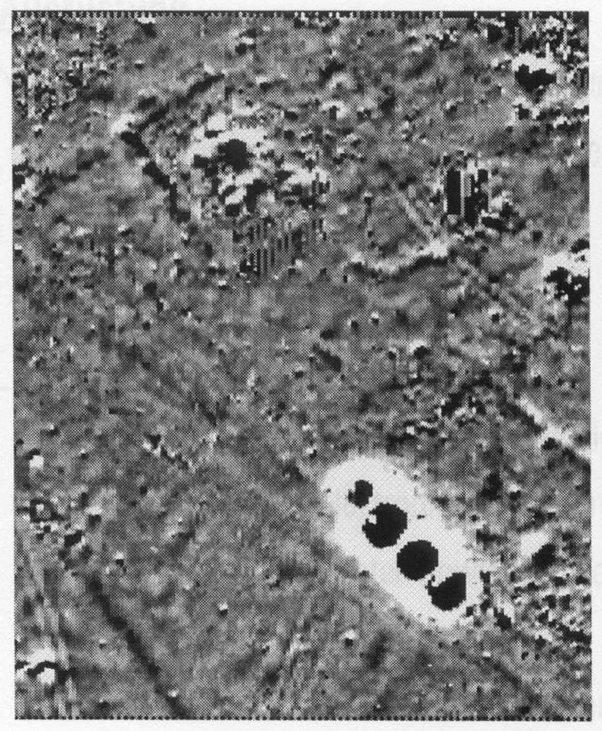

What was Fired in the Kilns?
Fortunately, numerous kiln furniture items were found in the firing chambers and in the vicinity of the kilns, so that it was possible to clearly determine which material was fired in the kilns. Remains of lion-dragon heads and many fragments of horned dragons were discovered in two of the kilns, as well as a green-glazed terracotta figure. Other kilns contained the remains of roof tiles, bricks and floor tiles as well as unfired clay bricks. These finds suggest that the kilns were used to produce building materials for the construction of the large temple. A smaller kiln in the west of the temple was probably used to produce simple pottery. Large quantities of brick remains inside the ovens indicate that they were originally built higher and possibly domed. Such “manthou kilns” or “cross-draught kilns” have been known in Central Asia since the 1st millennium.
Finds from kiln excavations
Relief Plate with Depiction of a Lion-Dragon
Description
Part of a relief panel roof ornament. This head of a fantastic hybrid of dragon and lion elements appears to have been first cast in molds, then reworked by hand with a knife-like tool and then hardened by firing in a kiln. The hand-crafted long beak, large gaping mouth, hair and mane are fused into leaf-shaped patterns and fleshy parts such as the eyes are embossed.
